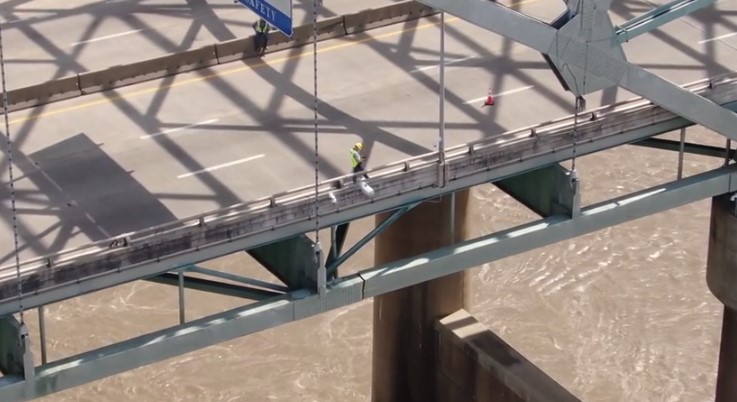MEMPHIS, Tenn. — Wednesday marks the day Shelby County residents may start seeing more signs of activity on the I-40 bridge as crews prepare to start working on repairs.
Wednesday afternoon, crews will create a platform near the center of the bridge so workers can get down to the crack when they’re ready.
Right now, some of the key bridge components are being made in Bowling Green, Kentucky. The Tennessee Department of Transportation hired a company called Stupp Bridge to manufacture two giant steel plates. The 35-foot sections weigh about 18,000 pounds and will be attached to the damaged part of the bridge while crews work on a permanent fix.
TDOT said the company was chosen in part because they had the raw material on hand. The company has been making steel for more than 150 years and specializes in plate girders for bridges and buildings.
TDOT has trucks at the ready to haul the new plates from Kentucky to Memphis, but all of this effort is just for the first phase of repairs.
Once the work begins, the contractor plans to keep crews going 24-hours a day until they get it all done. The project could take months and transportation officials said cars will not be allowed back on the bridge until both phases of the project are complete.
“Safety along this whole way is of prime utmost importance to us. First and foremost is safety of the public. Anybody traveling up and down our roads, we want the roads to be safe – our roads and bridges to be safe. That’s part of our mission statement,” said TDOT Commissioner Clay Bright. “But we also want to be safe for our contractors and our workers who are going to be working on the bridge and inspectors.”
All this comes as Arkansas lawmakers raise new questions about the damage.
On Tuesday, Arkansas Department of Transportation Director Lorie Tudor and Deputy Director Rex Vines answered questions for two hours at the capitol in Little Rock. One of the issues that came up was the photo of the bridge crack in 2019.
One lawmaker noticed that a drain pipe in the background appeared to be bent with a scuff mark on it.
Mike Hill, Arkansas’ heavy bridge maintenance engineer suggested the pipe was damaged years ago as the bridge was beefed up for the possibility of an earthquake.
“What we believe is that at some point during the seismic retrofit, it was in the way of some of their work ’cause they just knocked it out of the way,” he said. “That’s the only thing we can come up with because there’s no deformation or anything for any of the secondary member of the tie girder or truss.”
Hill said there are other signs of scuff marks in the area, suggesting the bridge was hit by a crane or something. He was quick to point out that there is no real way of knowing how the bridge was damaged, but he says there are signs of wear that his team “cannot account for.”


















